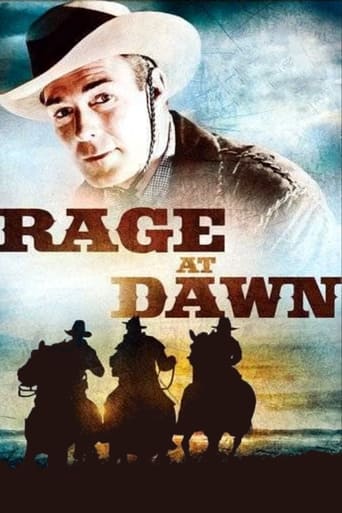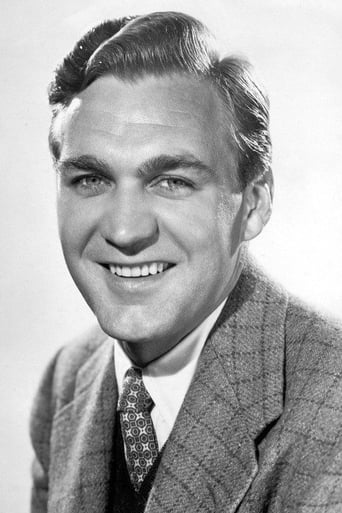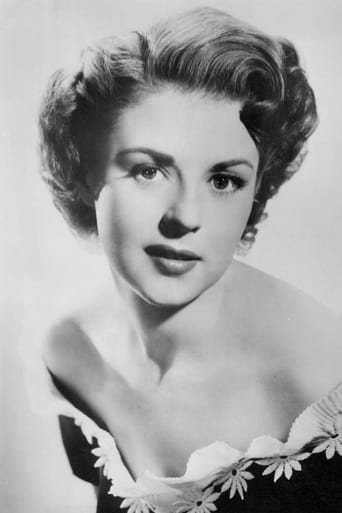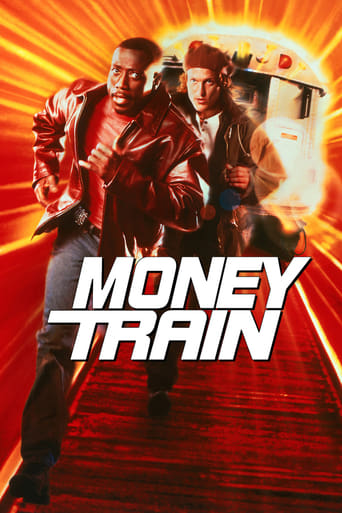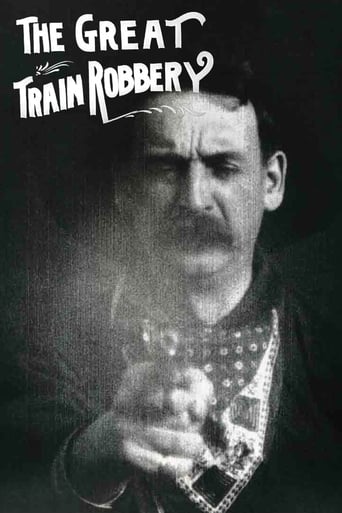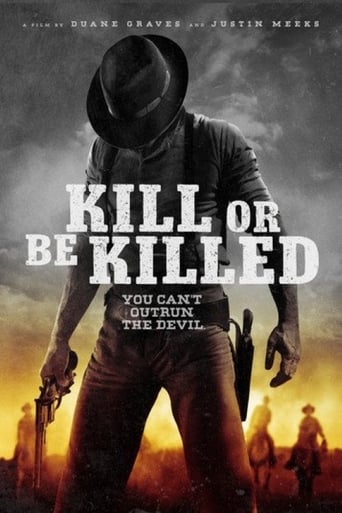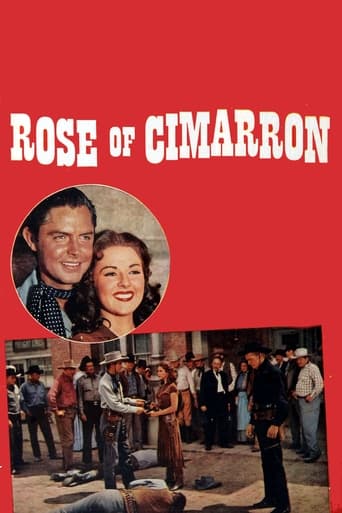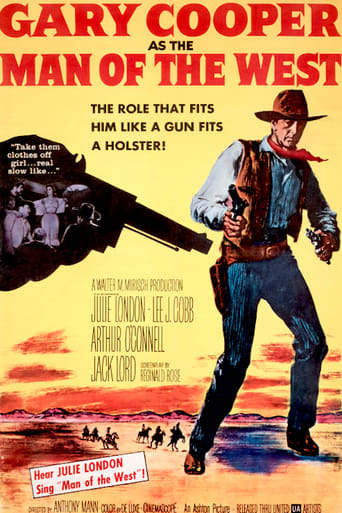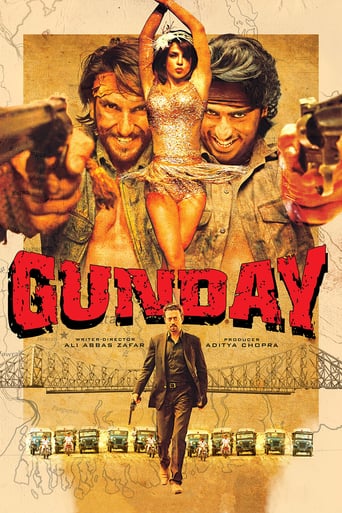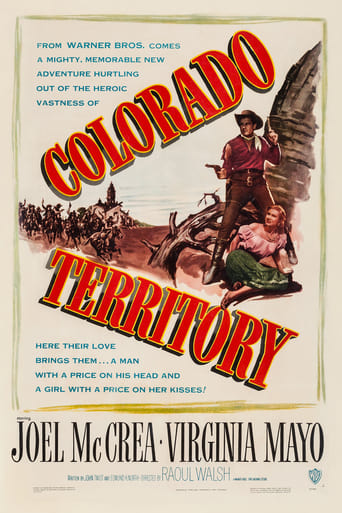Rage at Dawn (1955)
In this film's version of the story, four of the Reno Brothers are corrupt robbers and killers while a fifth, Clint is a respected Indiana farmer. A sister, Laura, who has inherited the family home, serves the outlaw brothers as a housekeeper and cook. One brother is killed when they go after a bank, the men of the town appear to have been waiting for them…
Watch Trailer
Cast


Similar titles
Reviews
This is one of the few movies I've ever seen where the whole audience broke into spontaneous, loud applause a third of the way in.
A great movie, one of the best of this year. There was a bit of confusion at one point in the plot, but nothing serious.
The plot isn't so bad, but the pace of storytelling is too slow which makes people bored. Certain moments are so obvious and unnecessary for the main plot. I would've fast-forwarded those moments if it was an online streaming. The ending looks like implying a sequel, not sure if this movie will get one
Actress is magnificent and exudes a hypnotic screen presence in this affecting drama.
I quote from the message on the screen at the beginning of the film "This is the true story of the Reno Brothers.....who were the first train robbers in American history". Well, the film then begins with the Reno gang being shot up attempting to rob a bank, with brother Bill killed. I could find no evidence that this gang ever attempted to rob a bank, and no Reno brother was ever shot dead! Sister Laura is presented as a refined young woman who disapproves of her brother's criminal activities, but continues to harbor them out of filial loyalty. Well, the real Laura Reno was a mid-teen wild child at this time, who supported her brother's activities, whatever they might be. But, we couldn't have 57 year old Randolph Scott wooing an under-aged wild girl! Next thing we know, the Pinkerton(renamed Peterson) Detective Agency selects Scott's character(James Barlow), an ex-Confederate spy and notorious ladies man, to head a bogus train robbery near the Reno's headquarters, to attract their attention. That's right, according to the film, the Peterson(Pinkerton) Agency staged the first train robbery in US history, and the Renos became train robbers only at the urging of Scott's character, after he was accepted as one of their gang! According to the film, the Reno's one attempt to rob a train was a disaster, resulting in the capture of all by Peterson(Pinkerton) agents waiting in the express car and in the surrounding bush.Failed bank robbers and failed train robbers. That is their claim to fame? Actually, they staged two successful train robberies before being thwarted by Pinkerton agents in their 3rd attempt, more or less as dramatized in the film, except that they were not wounded nor captured, as shown in the film! Two members of the gang, not the whole gang as depicted,did rob the courthouse in Gallatin, MO. John Reno was recognized, arrested and jailed long term as a result of this raid. Other gang members robbed a number of other courthouses in various upper Midwest states.The undramatic truth is that the other Reno brothers were captured by Pinkerton agents while hiding out in Indianapolis or in Canada.Presumably,the title of this film referes to the rage of the citizens in the regions frequented by the gang, provoking them to carry out 3 lynching incidents, not just the one shown in the film.As shown in the film, 3 Reno brothers met their fate in the last of these 3 lynching incidents, although the film got one of the brothers involved wrong. Unlike in the film, no one in these large vigilante groups was ever tried or jailed for these lynchings.The Reno brothers and their extended gang were much more versatile and successful in their criminal activities than depicted in this film, which portrays them as a poor man's prelude to the James-Younger gang. Why was this gang so reviled, whereas the James-Youngers were often hailed as heroes by locals and much better remembered today? The James Gang only robbed banks and trains, which were mostly owned by Yankee investors, and didn't much directly impact the ordinary people, mostly southern sympathizers, in the regions where the robberies took place. In contrast, the Reno brothers had a much more diverse criminal resume. They robbed various private businesses and a number of post offices and courthouses. In addition, when they used a certain hotel for their headquarters, they fleeced and sometimes murdered the guests, which increased the reputation of this region as a dangerous destination for future would be travelers. Also, they were assumed responsible for a rash of unexplained fires over a period of years, that destroyed homes and businesses. Many of these deeds hurt the locals or local government activities, rather than some far off set of investors.During the Civil War , they sometimes received bonuses for volunteering, or payment for taking the place of draft dodgers, then promptly deserted to repeat the process elsewhere, under an assumed name.The film could have illustrated some of these activities instead of a bogus failed bank robbery! It could have also spent some time exploring their childhoods for reasons for their mass criminal personalities. The Renos were hardly poverty stricken. They had substantial agricultural land holdings, which actually aided them in their criminal careers. The film does emphasize the intimidation and bribery of local law officials, which much extended their criminal careers.In summary, this oater should not be regarded, as claimed, a decent historical portrait of the Reno gang. Rather, it should be regarded as just another Scott-starring yarn, with an unusually talented set of supporting actors, exploiting the Reno gang notoriety as a reference point.Scott plays his southern gentleman persona to the hilt in dealing with the Renos and others, especially Laura. I down grade the film for claiming to be much more than what it actually delivered. It does nicely dramatize the point that vigilante justice is sometimes the only practical way to rid a community of a chronic criminal element, when the official justice system fails to do so, for various reasons.It also dramatizes the importance of the Pinkerton Agency at a time long before the FBI existed. This film is currently available very cheaply as part of a Scott Western Collection DVD package.
This is the true story of the Reno brothers....Clint, a respected farmer, and Frank, Simeon, John, and Bill...who were the first train robbers in American history. Looting, burning and killing, this infamous clan rode through the middle border states setting the pattern for the great outlaw bands which were to follow: the James boys, the Daltons and the Youngers.The Year 1866, the place is Southern Indiana.Well not quite Indiana exactly as the film was shot on location at Columbia State Historic Park, and apparently some Western purists see this as a blip on the movies Western worth! (hmm) I don't conspire to that at all since what I want from a B Western such as this is a lush Western feel, with identifiable good and bad guys. I feel that director Tim Whelan achieves the latter and his cinematographer Ray Rennahan achieves the former. Rage At Dawn does have a sense of seen it all before about it, but that's not in detriment to it because it's possibly a picture that has been copied more than it has copied from others before it. It's nice to have a real solid Western using a proper and reliable story to work from. While using top professional actors like Forrest Tucker and J. Carrol Naish to be bad fellas obviously helps the piece; as does having the genre legend that is Randolph Scott as your ebullient good guy. Scott fans who haven't seen the picture should be advised, tho, that he isn't actually in the film for the first third. But as always he's worth the wait and it's clever of Whelan to keep us waiting whilst fully forming the Reno legend.With some nicely staged set pieces (the train scenes are well worth our time) and a fabulously dark turn of events in the finale that goes against the grain (shadow play supreme at work), this becomes a genre film well worth taking a peek at. 7/10Footnote: DVD/Public Domain prints of the film are low on quality and do not do justice to the location and costuming. The best print I have seen of this film was on Commercial British TV. Caution is advised on where you source the film from.
Though Randolph Scott is the nominal star, Rage At Dawn really isn't about him. It's about the gang he's sent to capture, the infamous Reno brothers who operated out of Indiana right after the Civil War. Scott in fact does not make an appearance until a quarter of the film is over.After one Reno brother is killed in a failed bank robbery, the three remaining outlaw Renos, Forrest Tucker, J. Carrol Naish, and Myron Healey, are still very much in business. They kill an informant who was working for the Peterson(Pinkerton) Detective Agency and plan future robberies at the home of their sister Laura who is played by Mala Powers.William Peterson assigns two new men to the job, Kenneth Tobey and a former Confederate spy Randolph Scott. The rest of the story is about their capture and the aftermath.With a little research I found the story hardly sticks to the facts. Scott for instance is a totally fictional character though the Pinkertons were very much involved in the apprehension. Mala Powers is portrayed as deploring their crimes, but still loyal to her brothers, in fact she was quite the wild child in her day and aided and abetted the male Renos in every way. Only two of the Renos were in fact lynched in the end by a mob, the character of John Reno who Myron Healey plays died in prison.One thing is true, by intimidation and bribery the Renos did have a safe haven in their home county in Indiana. The three county officials who were on the Reno tab are Edgar Buchanan-judge, Ray Teal-sheriff, and Howard Petrie-county prosecutor. The three of them are the best thing in Rage At Dawn. I don't blame Randolph Scott for saying that he'd rather go after them than the Reno brothers. Scott is a cynical hero in this one, part of his job in the Civil War as a spy was romancing the wives of high placed union officials, so he's got no problem courting Mala Powers to get the job done. I doubt the real Laura Reno would have fallen for it. Still Scott turns in a good performance.As does the rest of the cast in this film, though I will say Indiana is not the usual setting for a western. Maybe this one should be called a Midwestern.
This is a very-much copied western which belongs technically to the category of Randolph Scott westerns; this large and interesting body of work itself should be divided I suggest into the 1940s B/W series, and the 1950s color series; this is one of the earlier color efforts, an expensive-looking production but with somewhat inconsistent color. In several of his better efforts, Scott's role was that of a law officer or detective infiltrating some group of schemers. The story-line here is a fictionalized biography by veteran Frank Gruber, with screenplay by Horace McCoy, detailing the events of the Reno Brothers' gang and their train robberies performed in rural Indiana c. 1866. Scott's character is Barlow, a veteran Southern spy with impressive credentials. When their agent operating with the gang is murdered (after the gang is set up for capture), the Peterson Detective Agemcy sends for Scott to work with agents Kenneth Tobey and Ralph Moody to infiltrate the gang himself. Their device is a staged train robbery faked by the team, and the promise of a $100,000 payoff in the future. The ruse works; Scott is accepted by the gang, including Frank Reno, its leader, played strongly by Forrest Tucker. But immediately Scott finds he has problems. One of the Reno family, Denver Pyle, has nothing to do with the crimes and Scott falls in love with Mala Powers, his sister, who is bitter and unhappy; of course when he turns out to be just another bank robber, she turns against him, despite their obvious attraction and his courtly manners. From this point on, Scott helps the others pull an unremunerative robbery and becomes Tucker's rival to be the head of the gang. Between runs to town to report to his partners, he also is introduced to the three inside men in the town from which the gang operates--played by fine actor Howard Petrie, Edgar Buchanan and "Bonanza's" TV sheriff talented Ray Teal. Despite setbacks, the entrapment of the gang works. In a long and well-done shootout, several of the gang are killed, along with Scott's partner. He is then free to reveal his the role he has been playing all along. Powers tries to shoot him at night, but she comes nowhere close and ends up in his arms. Then Pyle comes to warn the detectives that a mob has been formed, led by smooth-talking Trevow Bardette and Jimmy Lydon. Scott tries has to ride off to try to save the gang from being lynched. The film's ending is downbeat but historically accurate, bringing to the end a memorable adventure tale that might have been made differently but is very lively and well-made exactly as it is. The other members of the gang are Myron Healey and powerful J. Carroll Naish, plus others, with George Wallace as the sheriff of Seymour and William Phipps, Chubby Johnson and Holly Bane in smaller roles. Director Tim Whelna did a solid if unspectacular job of directing a very difficult film, with day, night, action, dialogue, interior, exterior and battle scenes. The cinematography by Ray Rennahan and the music by Paul Sawtell are very fine, and Walter E. Keller's art direction is above average also. I enjoy this Scott western as a transitional work and for its attempts to make a true-to-life historical fictionalized biography, for the mostly-implied-level idea on which characters interact in this swift-moving adventure, and for the authentic look and feel of the work. A very entertaining film by anyone's standards.

